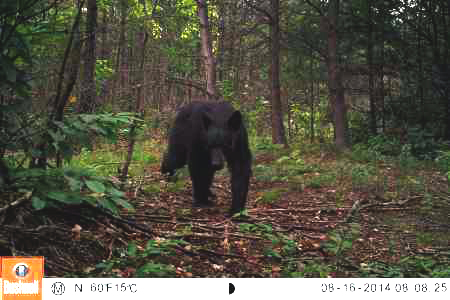From the U.S. Forest Service National Forests in North Carolina
By Lisa Jennings, Natural Resource Specialist:
It was my first prescribed burn. After weeks of training, and months of anticipation, I was finally on the ground – drip torch in hand – ready to apply fire to restore the mixed pine-hardwood forests at the edge of the Blue Ridge Mountains, on the Grandfather Ranger District of Pisgah National Forest.
Joining the forest service only two months earlier, I had a mainly academic knowledge of fire’s effect on plant and wildlife communities. As the coordinator for the Grandfather Restoration Project, part of the Collaborative Forest Landscape Restoration Program, I had to come up to speed with the on-the-ground reality of prescribed fire use quickly. In the Forest Service’s Southern Region, prescribed fire is a key tool for management and restoration of fire-dependent ecosystems. The Grandfather Ranger District, with its south-facing piney slopes, has a historic fire return interval of 5-7 years. Today, the return interval is ten-fold the historic record, averaging 50-70 years across the district.
As I lit the fire that early March morning, igniting the thick leaf litter and dense shrubs that accumulated with years of fire suppression, I couldn’t help but wonder – What happens to the wildlife after the fire? Replacing the fuels with scorched earth is unnerving to those who are not familiar with fire as a restoration tool, with the aftermath often being likened to a “moon-scape.”
The reality is much different. Just as certain plants need fire to succeed, the animals that depend on those species benefit from fire as well.
“Prescribed fire burns at varying intensities across the landscape, creating abundant soft mast, grasses and forbs, a reduced shrub layer, and small canopy gaps,” said Pisgah National Forest Wildlife Biologist Chris Williams. “These conditions provide foraging, nesting, and escape cover for a variety of game and non-game terrestrial wildlife.”
With the evolving use of prescribed fire as a tool for restoration, it is critical to study the effects of fire on the communities we are looking to restore. Traditional fire studies often focus on vegetation. The participants in the Grandfather Restoration Project decided take it one step further – to directly study wildlife use in sites that are treated with prescribed fire compared with untreated sites. Working collaboratively, wildlife specialists from Pisgah National Forest, the North Carolina Wildlife Resource Commission, and The Nature Conservancy designed a cutting-edge study using wildlife cameras.
Re-entering the prescribed burn unit just four months after the fire, wildlife cameras in tow, I could see the changes in vegetation. From a so-called “moon-scape” just after the burn, a lush herbaceous layer had appeared, carpeting the forest with blueberries and grasses. Using 50 camera points over a six-week period in July and August, we were able to study which wildlife species are using our forests, and what habitats they prefer.
“I was very encouraged by the effects of the burn,” Williams said. “While the results of the study have not been fully analyzed, the photos can provide land managers with population estimates and predator-prey ratios.”
Early data indicates a higher use of the burn unit by wildlife when compared to the unburned unit. More solid results will be available as the data is analyzed over the next several months.




Before you comment
The comments section is here to provide a platform for civil dialogue on the issues we face together as a local community. Xpress is committed to offering this platform for all voices, but when the tone of the discussion gets nasty or strays off topic, we believe many people choose not to participate. Xpress editors are determined to moderate comments to ensure a constructive interchange is maintained. All comments judged not to be in keeping with the spirit of civil discourse will be removed and repeat violators will be banned. See here for our terms of service. Thank you for being part of this effort to promote respectful discussion.